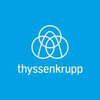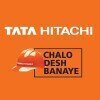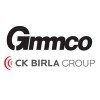
i
SMS
Group
Filter interviews by
SMS Group Software Developer Interview Questions and Answers
SMS Group Software Developer Interview Experiences
1 interview found
(2 Questions)
- Q1. Synchronous and Asynchronous programming
- Q2. What are Observables in angular?
- Ans.
Observables in Angular are used to handle asynchronous operations and manage streams of data.
Observables are used to handle asynchronous data streams in Angular applications.
They can be used to represent data that changes over time.
Observables can be created from events, HTTP requests, and other sources.
They can be subscribed to, and multiple subscribers can listen to the same Observable.
Operators can be used to manipu...
Skills evaluated in this interview
Top trending discussions






Interview questions from similar companies

Software Developer Interview Questions & Answers
Wipro Infrastructure Engineeringposted on 15 Oct 2022
I applied via Company Website and was interviewed in Sep 2022. There were 2 interview rounds.
(28 Questions)
- Q1. Introduced my self in 1st question
- Ans. Good evening, respected sir/mam Thank you for giving me this opportunity to introduce myself, my name is Pooja Najan,I am form Shevgoan, dist. A. Nagar. I am currently teaching in engineering of computer diploma 3rd year continue, my hobbies are Reading, writting and playing computer games, I would like to become a software engineer in my life and I am fresher. I belong to middle class family. There are 6 members in my...
- Q2. What is c language? What is keyword in c language?
- Ans.
C language is a high-level programming language used for developing software. Keywords are reserved words with predefined meanings.
C language is a general-purpose programming language.
It was developed in the early 1970s by Dennis Ritchie.
C language is widely used for system programming and embedded systems.
Keywords in C language cannot be used as variable names or identifiers.
Examples of keywords in C language include ...
- Q3. What is data type in c language
- Ans.
Data type in C language defines the type of data that a variable can hold.
C language has built-in data types like int, float, char, etc.
Data types determine the size and layout of variables in memory.
They also define the operations that can be performed on the variables.
For example, int can store whole numbers, float can store decimal numbers, and char can store single characters.
- Q4. What is Array, pointer in c language
- Ans.
An array is a collection of elements of the same data type, stored in contiguous memory locations. A pointer is a variable that stores the memory address of another variable.
Arrays allow storing multiple values of the same type in a single variable.
Pointers are used to store memory addresses and can be used to access and manipulate data indirectly.
Example: int arr[5]; // declares an array of integers with 5 elements
Exa...
- Q5. What is operator ?And it's type of operator.
- Ans.
An operator is a symbol or keyword used to perform operations on operands in a programming language.
Operators are used to manipulate data and perform calculations.
There are different types of operators such as arithmetic, assignment, comparison, logical, etc.
Examples of operators include + (addition), = (assignment), == (equality), && (logical AND), etc.
- Q6. Syntax of c language?
- Ans.
The syntax of the C programming language is a set of rules that dictate how programs written in C should be structured and formatted.
C programs are written using a combination of keywords, identifiers, operators, and punctuation marks.
Statements in C are terminated with a semicolon (;).
Blocks of code are enclosed within curly braces ({ }).
Variables must be declared before they can be used, specifying their data type.
Fu...
- Q7. What is string in c language
- Ans.
A string in C language is a sequence of characters stored in an array.
Strings in C are represented as arrays of characters.
They are terminated by a null character '\0'.
Strings can be manipulated using various string functions like strcpy, strcat, etc.
- Q8. Syntax of string in c language
- Ans.
The syntax of a string in the C language is a sequence of characters enclosed in double quotes.
Strings in C are represented as arrays of characters.
Strings are null-terminated, meaning they end with a null character '\0'.
String literals can be assigned to char arrays or pointers.
String manipulation functions like strcpy, strcat, strlen, etc., are used to work with strings.
- Q9. Different between calloc()and malloc()
- Ans.
calloc() and malloc() are both used for dynamic memory allocation in C, but calloc() also initializes the allocated memory to zero.
calloc() allocates memory for an array of elements and initializes them to zero.
malloc() only allocates memory for the specified number of bytes.
calloc() is useful when initializing arrays or structures.
malloc() is useful when allocating memory for a single variable or a dynamically sized a...
- Q10. Can I compile c program without main ()
- Ans.
Yes, it is possible to compile a C program without main().
A C program must have a main() function as the entry point.
However, it is possible to compile a C program without a main() function using a different entry point.
This can be achieved by defining a different entry point using linker options or compiler-specific attributes.
For example, in some embedded systems, the entry point may be defined as _start() instead of...
- Q11. What is nested structure?
- Ans.
Nested structure refers to a structure within another structure in programming.
It allows organizing data in a hierarchical manner.
Nested structures can be used to represent complex relationships between data.
They can be implemented using classes, structs, or objects in various programming languages.
Example: A structure representing a person can have a nested structure representing their address.
- Q12. What is a preprocesser?
- Ans.
A preprocessor is a program or tool that processes source code before it is compiled or interpreted.
Preprocessors are commonly used in programming languages like C and C++.
They perform tasks such as macro expansion, file inclusion, and conditional compilation.
Examples of preprocessors include the C preprocessor (cpp) and the C++ preprocessor (cpp).
- Q13. What is the use of printf() and scanf ()?
- Ans.
printf() is used to print formatted output to the console, while scanf() is used to read formatted input from the console.
printf() is used to display output on the console, allowing for formatting options like specifying the number of decimal places or padding with leading zeros.
scanf() is used to read input from the console, allowing for formatting options like reading integers, floats, or strings.
Both functions are p...
- Q14. What is /0 character?
- Ans.
The /0 character, also known as the null character, is a control character used to indicate the end of a string in C-based languages.
It has a value of zero and is represented as '\0' in C-based languages.
It is used to terminate strings and is typically placed at the end of a character array.
When encountered, it signals the end of the string and any characters after it are ignored.
- Q15. How is Function declared in c language?
- Ans.
A function in C is declared by specifying the return type, function name, and parameters (if any).
The return type specifies the type of value the function will return.
The function name is used to call the function.
Parameters are optional and specify the input values the function expects.
Function declaration ends with a semicolon.
- Q16. What is Dynamic Memory Allocation? Mention it's syntax.
- Ans.
Dynamic Memory Allocation is the process of allocating memory at runtime for storing data.
Dynamic Memory Allocation allows programs to allocate memory as needed during runtime.
It helps in managing memory efficiently by allocating and deallocating memory as required.
The syntax for dynamic memory allocation in C is using the 'malloc' function to allocate memory and 'free' function to deallocate memory.
Example: char* str ...
- Q17. Write an example for structure in c language.
- Ans.
A structure in C is a user-defined data type that allows you to combine different types of variables under a single name.
Structures are used to represent real-world entities or concepts in programming.
They can contain variables of different data types, including other structures.
Structures provide a way to organize related data and improve code readability and maintainability.
You can access the members of a structure u...
- Q18. Can I create customized header file in C ?
- Ans.
Yes, you can create customized header files in C.
Customized header files in C are used to declare functions, variables, and macros that can be used across multiple source files.
To create a customized header file, you can use the .h extension and include it in your C program using the #include directive.
The header file should contain function prototypes, type definitions, and macro definitions.
You can also include other...
- Q19. What do you mean by Memory Leak?
- Ans.
Memory leak is a situation where a program fails to release memory that is no longer needed, leading to memory exhaustion.
Memory leak occurs when dynamically allocated memory is not deallocated properly.
It can happen when a program loses the reference to allocated memory without freeing it.
Memory leaks can gradually consume all available memory, causing the program to crash or slow down.
Common causes include forgetting...
- Q20. Static Local Variable and what is there is use?
- Ans.
Static local variables are variables declared inside a function that retain their value between function calls.
Static local variables are initialized only once, and their value persists across multiple function calls.
They are useful for maintaining state information within a function.
Static local variables have a local scope and are not accessible outside the function.
They can be used to count the number of times a fun...
- Q21. What is statement is efficient and why? X=X+1/X++?
- Ans.
The statement X=X+1/X++ is not efficient.
The use of post-increment operator (X++) can lead to unpredictable behavior and make the code harder to understand.
The division operation (1/X) can result in a runtime error if X is 0.
The statement can be rewritten in a more efficient and readable way.
- Q22. What is typecasting?
- Ans.
Typecasting is the process of converting one data type into another in programming.
Typecasting allows programmers to change the data type of a variable.
It can be done implicitly or explicitly.
Implicit typecasting is automatic and occurs when a value of one data type is assigned to a variable of another data type.
Explicit typecasting is done manually using casting operators.
Examples of typecasting include converting an ...
- Q23. C program to hello world
- Ans.
A C program to print 'Hello, World!'
Use the 'printf' function from the 'stdio.h' library to print the message
Include the 'stdio.h' header file at the beginning of the program
Use the 'int' return type for the main function
End the program with a 'return 0' statement
- Q24. Features of C language?
- Ans.
C is a powerful and widely used programming language known for its efficiency and low-level control.
C is a procedural language with a simple syntax and a rich set of built-in functions.
It allows direct memory manipulation and provides low-level access to hardware.
C supports modular programming with the use of functions and libraries.
It is highly portable and can be used to develop software for various platforms.
C is co...
- Q25. What is the oops Concept?
- Ans.
OOPs is a programming paradigm based on the concept of objects that interact with each other.
OOPs stands for Object-Oriented Programming.
It focuses on creating objects that have properties and methods to interact with each other.
Encapsulation, Inheritance, Polymorphism, and Abstraction are the four main pillars of OOPs.
Examples of OOPs languages are Java, C++, Python, etc.
- Q26. What is the polymorphisam?
- Ans.
Polymorphism is the ability of an object to take on many forms.
Polymorphism allows objects of different classes to be treated as if they are of the same class.
It is achieved through method overriding and method overloading.
Example: A parent class Animal can have child classes like Dog, Cat, and Cow, each with their own implementation of the method 'makeSound'.
Polymorphism makes code more flexible and reusable.
- Q27. What is encapsulation?
- Ans.
Encapsulation is the process of hiding implementation details and restricting access to an object's properties and methods.
Encapsulation helps in achieving data abstraction and security.
It allows for better control over the data and prevents unwanted changes.
Access to the object's properties and methods is restricted through access modifiers such as public, private, and protected.
For example, a class may have private v...
- Q28. What is the abstraction?
- Ans.
Abstraction is the process of hiding complex implementation details and exposing only the necessary information.
Abstraction is a fundamental concept in object-oriented programming.
It helps in reducing complexity and improving the maintainability of code.
Abstraction can be achieved through interfaces, abstract classes, and encapsulation.
For example, a car can be abstracted as a machine with wheels, engine, and steering.
...
(8 Questions)
- Q1. What is the polymorphisam?
- Ans.
Polymorphism is the ability of an object to take on many forms.
Polymorphism allows objects of different classes to be treated as if they are of the same class.
It is achieved through method overriding and method overloading.
Examples include function overloading, operator overloading, and inheritance.
Polymorphism helps in achieving loose coupling and flexibility in code design.
- Q2. Basic concept of the c language
- Q3. Basic concept of the Oops?
- Ans.
OOPs stands for Object-Oriented Programming. It is a programming paradigm based on the concept of objects.
OOPs focuses on creating reusable code and organizing it into objects.
It involves encapsulation, inheritance, and polymorphism.
Encapsulation is the process of hiding implementation details and exposing only necessary information.
Inheritance allows a class to inherit properties and methods from another class.
Polymor...
- Q4. What is operating system?
- Ans.
An operating system is a software that manages computer hardware and software resources.
It acts as an interface between the user and the computer hardware.
It provides services such as memory management, process management, and device management.
Examples include Windows, macOS, Linux, and Android.
It allows multiple applications to run simultaneously.
It provides security features such as user authentication and access co...
- Q5. What is access matrix?
- Ans.
Access matrix is a security model that defines access rights of subjects to objects.
Access matrix is a table that lists all subjects and objects and their corresponding access rights.
It is used to control access to resources in a computer system.
Access matrix can be implemented using access control lists (ACLs) or capabilities.
It helps in enforcing the principle of least privilege.
Example: A user can have read-only acc...
- Q6. What is real -time system?
- Ans.
Real-time system is a computer system that processes data as it is received and provides immediate response.
Real-time systems are used in applications where timely response is critical.
They are designed to process data in real-time without any delay.
Examples include air traffic control systems, stock trading systems, and medical monitoring systems.
- Q7. What is multi_programming?
- Ans.
Multi-programming is the ability of a computer to execute multiple programs simultaneously.
Allows for efficient use of CPU time
Requires memory management techniques such as swapping and paging
Examples include time-sharing systems and batch processing systems
- Q8. What is multi -tasking?
- Ans.
Multitasking is the ability of a system to perform multiple tasks simultaneously.
Multitasking allows a system to switch between tasks quickly and efficiently.
It can be achieved through hardware or software.
Examples include running multiple applications on a computer or phone, or listening to music while working on a document.
Multitasking can improve productivity and efficiency, but can also lead to decreased performanc...
Interview Preparation Tips
- C ,operating system
- C++
So thank you for this, That's all about me.
Thank you again..... 🙏🙏
Skills evaluated in this interview

Software Engineer Interview Questions & Answers
Sigma Electric Manufacturing Corporationposted on 30 May 2024
(1 Question)
- Q1. Basics of OOP and JavaScript related
Interview Preparation Tips

Software Engineer Interview Questions & Answers
Wipro Infrastructure Engineeringposted on 27 Apr 2022
I applied via Naukri.com and was interviewed in Mar 2022. There were 2 interview rounds.
Reasoning , English
(1 Question)
- Q1. Basics of c and java
Interview Preparation Tips

Software Engineer Interview Questions & Answers
Wipro Infrastructure Engineeringposted on 20 May 2022
I applied via Company Website and was interviewed in Apr 2022. There were 2 interview rounds.

Multiple choice questions
Interview Preparation Tips
- Phython
- About python
- Importace of python
- White Box Testing
- Project Management
- Catagies of python
- Features of python
- Overview of python

Java Developer Interview Questions & Answers
Acme Cleantech Solutionsposted on 24 Nov 2024
I applied via Referral
Easy general aptitude and reasoning
2 codes given one on pattern and one logical
Basic questions hexadecimal to decimal code
(2 Questions)
- Q1. Code given star and no pattern alternate
- Q2. Oops basic concepts

Graduate Engineer Interview Questions & Answers
Sigma Electric Manufacturing Corporationposted on 19 Jan 2021
I applied via Walk-in and was interviewed before Jan 2020. There was 1 interview round.
Interview Questionnaire
1 Question
- Q1. Introduction? Least count of instruments? Previous experience based questions?
Interview Preparation Tips

Graduate Engineer Trainee (Get) Interview Questions & Answers
TechnipFMCposted on 30 May 2017
I appeared for an interview in Oct 2016.
Interview Preparation Tips

I applied via Campus Placement and was interviewed in Jan 2024. There were 3 interview rounds.
Gender Diversity in industry or organisations
Reasonings and aptitude
(3 Questions)
- Q1. Difference Between Altornators and Generators
- Ans.
Alternators produce AC current while generators produce DC current.
Alternators use a rotating magnetic field to generate alternating current (AC)
Generators use a stationary magnetic field to generate direct current (DC)
Alternators are more efficient and commonly used in modern vehicles
Generators are simpler in construction but less efficient than alternators
- Q2. Why the transmission line are in the multiple of 11? Like 11kV 22kV 33kV
- Ans.
Transmission lines use multiples of 11 for voltage levels to ensure efficient power distribution and reduce losses.
The 11kV system is derived from the square root of 3 (√3) times the line-to-line voltage in a three-phase system.
Using multiples of 11 helps in maintaining a standard voltage level for transformers and equipment.
For example, 33kV is three times 11kV, which is a common voltage level for medium voltage distr...
- Q3. Why we use ac apliances instead of dc apliances in our homes?
- Ans.
AC appliances are used in homes because AC can be easily converted to different voltages, making it more versatile for household use.
AC can be easily converted to different voltages, making it more versatile for household use
AC is more efficient for long-distance power transmission
AC allows for the use of transformers to step up or step down voltage as needed
AC motors are simpler and cheaper than DC motors for many app...
Interview Preparation Tips
- Basic electrical engineering
- Electrical Power System

Graduate Engineer Trainee (Get) Interview Questions & Answers
Sigma Electric Manufacturing Corporationposted on 16 May 2021
I applied via Naukri.com and was interviewed in Jun 2020. There were 4 interview rounds.
Interview Questionnaire
13 Questions
- Q1. They asked me lot of technical questions on java technology and sql
- Q2. What is oops concepts of java and its type
- Ans.
Java OOPs concepts include inheritance, polymorphism, encapsulation, and abstraction.
Inheritance allows a class to inherit properties and methods from another class.
Polymorphism allows objects to take on multiple forms and behave differently based on the context.
Encapsulation hides the implementation details of a class and only exposes necessary information.
Abstraction focuses on the essential features of an object and...
- Q3. What is sql aggregation function
- Ans.
SQL aggregation functions perform calculations on multiple rows of a single column of a table.
Aggregation functions include COUNT, SUM, AVG, MAX, and MIN.
They are used with the SELECT statement to retrieve data from a table.
Examples: SELECT COUNT(*) FROM customers; SELECT AVG(price) FROM products;
Aggregate functions can also be used with the GROUP BY clause to group data by one or more columns.
- Q4. What is join and it's types
- Ans.
Join is a SQL operation that combines rows from two or more tables based on a related column between them.
Join is used to retrieve data from multiple tables in a single query.
Types of join include inner join, left join, right join, and full outer join.
Inner join returns only the matching rows from both tables.
Left join returns all the rows from the left table and matching rows from the right table.
Right join returns al...
- Q5. How to write join queries
- Ans.
Join queries are used to combine data from two or more tables based on a related column.
Use the JOIN keyword followed by the name of the table you want to join.
Specify the columns you want to select from each table.
Use the ON keyword to specify the column(s) that the tables should be joined on.
There are different types of joins: INNER JOIN, LEFT JOIN, RIGHT JOIN, and FULL OUTER JOIN.
Example: SELECT customers.name, orde...
- Q6. What is sql and how to use
- Ans.
SQL is a programming language used to manage and manipulate relational databases.
SQL stands for Structured Query Language
It is used to create, modify, and query databases
Common commands include SELECT, INSERT, UPDATE, and DELETE
Example: SELECT * FROM customers WHERE age > 18;
- Q7. What is constructor and how to use and explain it
- Ans.
A constructor is a special method used to initialize objects in a class.
Constructors have the same name as the class they belong to.
They are called automatically when an object is created.
Constructors can take parameters to set initial values.
They can be overloaded to provide multiple ways of initializing objects.
- Q8. What is class and object and different between method overriding and method overloading
- Ans.
Class and object are fundamental concepts in object-oriented programming. Method overloading and method overriding are two ways to achieve polymorphism.
A class is a blueprint or template for creating objects that encapsulate data and behavior.
An object is an instance of a class that has its own state and behavior.
Method overloading is when multiple methods in a class have the same name but different parameters.
Method o...
- Q9. What is exception handling and how to use
- Ans.
Exception handling is the process of handling errors and unexpected events in a program.
It involves identifying and anticipating potential errors
It provides a mechanism to handle these errors gracefully
It helps prevent program crashes and improves user experience
Examples include try-catch blocks, throw statements, and finally blocks
- Q10. What is multithreading and its method like wait method
- Ans.
Multithreading is the ability of a CPU to execute multiple threads concurrently. Wait method is used to pause a thread.
Multithreading allows for better utilization of CPU resources
Wait method is used to pause a thread until a certain condition is met
Other methods like notify and notifyAll can be used to wake up waiting threads
Multithreading can improve performance in applications that require parallel processing
Java pr...
- Q11. What is JSP and servlet and explain it
- Ans.
JSP and Servlet are Java technologies used for creating dynamic web pages and handling HTTP requests and responses.
JSP stands for JavaServer Pages and is used for creating dynamic web pages that can interact with server-side data and logic.
Servlet is a Java program that runs on a web server and handles HTTP requests and responses.
JSP and Servlet work together to create dynamic web applications that can generate HTML, p...
- Q12. What is sql sub query and explain it
- Ans.
SQL subquery is a query within another query used to retrieve data from one or more tables.
Subqueries are enclosed in parentheses and placed within the WHERE or HAVING clause of the outer query.
They can be used to filter, sort, or aggregate data based on the results of the subquery.
Subqueries can also be used in the SELECT statement to retrieve a single value or set of values.
Example: SELECT * FROM employees WHERE depa...
- Q13. What is complex query and how to write
- Ans.
A complex query is a query that involves multiple tables, conditions, and/or functions.
Start by identifying the tables involved in the query
Determine the conditions that need to be met using WHERE clause
Use JOIN to combine tables if necessary
Use aggregate functions like COUNT, SUM, AVG, etc. to perform calculations
Use subqueries to break down complex queries into smaller parts
Test the query and refine as necessary
Interview Preparation Tips
Skills evaluated in this interview
SMS Group Interview FAQs
Tell us how to improve this page.
SMS Group Interviews By Designations
- SMS Group Graduate Engineer Interview Questions
- SMS Group Graduate Engineer Trainee (Get) Interview Questions
- SMS Group Engineer Interview Questions
- SMS Group Senior Engineer Interview Questions
- SMS Group Assistant Manager Interview Questions
- SMS Group Software Developer Interview Questions
- SMS Group Assistant Design Engineer Interview Questions
- SMS Group Electrical Design Engineer Interview Questions
- Show more
Interview Questions for Popular Designations
- Software Engineer Interview Questions
- Java Developer Interview Questions
- Web Developer Interview Questions
- Senior Software Developer Interview Questions
- Application Developer Interview Questions
- Salesforce Developer Interview Questions
- Software Development Engineer Interview Questions
- Developer Interview Questions
- Show more
Overall Interview Experience Rating
based on 1 interview experience
Interview Questions from Similar Companies
SMS Group Software Developer Reviews and Ratings
based on 1 review
Rating in categories
|
Assistant Manager
71
salaries
| ₹8.9 L/yr - ₹15 L/yr |
|
Senior Manager
69
salaries
| ₹15 L/yr - ₹24 L/yr |
|
Deputy Manager
67
salaries
| ₹9.7 L/yr - ₹17.2 L/yr |
|
Manager
51
salaries
| ₹8.1 L/yr - ₹19.8 L/yr |
|
Senior Engineer
43
salaries
| ₹7 L/yr - ₹13 L/yr |

Sigma Electric Manufacturing Corporation

TÜV SÜD

Ceasefire Industries

TKIL
- Home >
- Interviews >
- SMS Group Interview Questions









